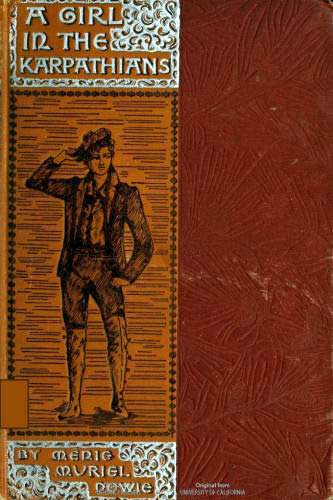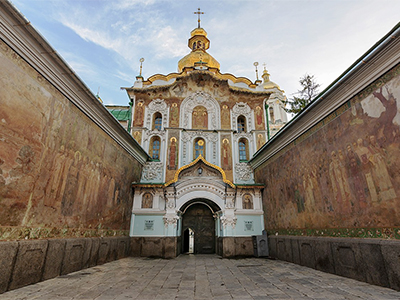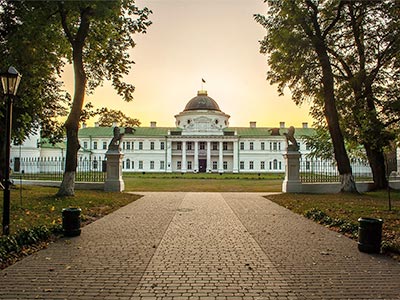 30.07.2018
Mykulychyn is the longest village in Europe
30.07.2018
Mykulychyn is the longest village in EuropeAbout Mykulychyn village
Mykulychyn is a specific Hutsul village in the Nadvirna region which, in addition to the magic Carpathian nature, a long time ago was famous for locals’ hospitality, a lot of boarding houses of high quality, mild temperate climate with healthy air, good connections between the cities of Galicia, Bukovina and Transcarpathia, availability of telegraph and telephone connection that contributed, particularly in the summer months, the mass arrival of so-called summer residents from all-around, even from abroad. The point is about the time when the Western Ukraine was a part of the Austro-Hungarian Empire, and then a part of Poland. And with the establishment of the Soviet regime in 1939 Mykulychyn lost its tourist and recreational and, of course, cultural and political value.
In the 19th century Sophron Vytvytsky (1819-1879), a Ukrainian writer, playwright, ethnographer, a pastor in Zhabie(Verkhovyna district) repeatedly visited Mykulychyn. He studied history, geography and ethnography of Hutsulshchyna. The result of his research was the specific “Hutsul encyclopedia” – a work “About Hutsuls” which was published in 1863. Here the author mentions about Mykulychyn: “As regards towns, only Mykulychyn is a purely Hutsul village, and, for example, in Pistyn or Nadvirna the question about Boikos or Hutsuls is usual answered-” we are not Boikos, but we belong to Hutsul“.
An adornment of Mykulychyn is an architectural monument – the Church of the Holy Trinity (1868) and the bell tower, which was built much earlier. The painting of the iconostasis was performed by an outstanding Ukrainian painter, poet and playwright Kornylo Ustyianovych (1839-1903). To the point, one of the apostles is portrayed by the author in his likeness as a memory of himself.
Ménie Muriel Dowie in the Carpathians
1889 a young writer from the United Kingdom, Scottish by birth, Ménie Muriel Dowie (1867-1945) visited Hutsulshchyna. She was captivated by mountain views, wooden buildings, folk art and Hutsul clothing. In 1891 M.Daui published in London a book “A Girl in the Carpathians“, in which she described her impressions of this trip. Interestingly, that Muriel Dowie considered the Hutsul clothes of Mykulychyn village the most beautiful that she had ever seen. In particular, she liked a women “keptar” (a short sleeveless fur coat) and decorated sandals which girls worn.
Hotels in Mykulychyn
When in 1894 the construction of a railway branch Stanislav -Voronienka was completed Mykulychyn began to develop intensively as a low mountain climatic resort. Anna Bauer was one of the first owners of the boarding house for tourists. As the “Newspaper of Kolomyia” reported on November 1, 1899 in Mykulychyn “the own villas were built by the families of Krasnytsky and Mizevych from Kolomyia, Baker, Briukhalsky, Sukhopilsky from Lviv and Tsensky from the town Vikna”. The same newspaper on November 8, 1899 informed: “The famous Polish traveler Tadeusz Starevski visited Mykulychyn. He stayed at a hotel of Shtenverh, where he met an artist Severyn Obst. The artist painted in the village brown-eyed Hutsul women, wells between the fires and waterfalls”.
1901 the first Ukrainian hotel was opened in Mykulychyn.
The Lviv Company “The people’s inn” rented from a pastor Tadei Halaichuk a villa near the railway station. Mykola Zaiachkivsky was a director of the inn. The villa had two floors, a large hall and eight rooms. The Lviv newspaper “Dilo” on August 20, 1901 reported that “The People’s inn” in village Mykulychyn would take tourists for a rest in the last arrival from 25th August to 20th September.
Famous people visiting Mykulychyn
There is a picturesque waterfall Kaplyvets in two and a half kilometers before the village Mykulychyn, left from the main road. It is known that in the summer of 1908 a prominent Ukrainian writer, essayist, scientific, social and political activist Ivan Franko (1856-1916) visited these places. In the fund of Franko (Kyiv) folklore materials are saved (bywords, folk songs etc.), which were recorded by his son Andriy in Mykulychyn and other Hutsul villages.
There is information about staying in Mykulychyn Julian Kobyliansky, the father of the famous Ukrainian writer Olga Kobylianska (1863-1942). Perhaps Olga Kobylyanska also visited Mykuluchyn, because a cousin of the writer Evdokia Boian had been living there since she married a sawmill master D.Boian from Mykulychyn. The heirs of the family Mssrs. Kyseliuks living in the village Tsaryna keep several letters of Julian Kobyliansky and a letter of O.Kobylianska dated June 20, 1912.
In the late 19th – early 20th centuries Tadeusz Obminski (1874- 1932), a prominent architect and lecturer of Lviv Polytechnic visited Mykulychyn. In 1916-1917 he was appointed a rector of this university. In the fund collection of the Museum of Folk Architecture and Culture a two-volume album of Obminski’s pictures and drawings is remained which illustrates the author’s deep admiration of national wooden architecture of Galicia and his thorough research. The architect T. Obminski developed a number of projects such as the hotel “National” in Lviv, the Lviv Polytechnic library, the church in Yaremche (after the war in the 50s of last century the church was taken down and since the 80s the part of the church fell under the newly built shopping center “Yaremche”, the bigger part was rebuilt into a branch of the Saving Bank), the villas in Hutsul style, the public buildings.
The future heir apparent of the Austro-Hungarian Empire Charles Franz Joseph of Habsburg which soon became the Emperor Charles (1916-1918) and his wife the Princess Zita of Bourbon-Parma visited Mykulychyn in 1912. The Austrian Archduke came to Mykulychyn at the invitation of the famous Prince of Lichtenstein, who was the owner of the Carpathian forests in this region, and here in Mykulychyn in April of 1912 the grouse hunting was arranged for the guests of the imperial court.
In early June of that year Charles Joseph Franz was back in Mykulychyn, where he had the opportunity to see the herds of deer in the forests. The photo has been remained which immortalizes the Austrian Archduke surrounded by Hutsuls with the beautiful Carpathian deer.
In the magazines of Galicia it was told about the resident of Mykulychyn who saw for the first time in his life the car in which the Archduke Charles traveled. It was in Yaremcha near the grand stone railway viaduct over the Prut River (the bridge was built in 1894 and completely destroyed by the Germans in July of 1944 during the retreat under the blows of the Soviet Army).
The Nazi in Mykulychyn
Watching the villager the future Emperor of the Austro-Hungarian Empire (by the way, he had not any armed guards) proposed the interesting Hutsul to take a drive through Yaremche, then he drove the happy man in Mykulychyn.
The occupying German authorities subordinated the forests of Mykulychyn as the forests of all Galicia to “the General Directorate of forests” located in Lviv. The old residents of Mykulychyn remember the forester Polotniuk as a wise and benevolent Ukrainian who had helped people as he had could. Of course, the Germans kept constantly in sight all the Ukrainian intelligentsia, which was well-disposed to its people and saw in Germans the common occupiers-enemies. The Nazis understood this and waited for the right moment to isolate and destroy the intelligentsia. Such a fate overtook Yevgen Polotniuk. In October 1943 he was taken from his house by Gestapo, and like hundreds other patriots-Galicians imprisoned in jail in Stanialaviv.
The tragic end came on November 28, 1943, when Yevgen Polotnyuk and the other nine Galicians were selected by Gestapo from among the prisoners in jail as hostages and shot publicly not far from the railway station in Vorokhta. The names of Galicians – the Ukraine sons are: Yevgen Polotniuk, Stepan Buchko, Panteleimon Haida, Stepan Demianchuk, Volodymyr Kitsa, Mykola Kostyk, Ivan Levytsky, Yurij Luchko, Vasyl Nalyvaiko and Ivan Nimchuk from the village Yamna.
-
 27.02.2024
World of pysanka
Embark on a journey into the captivating world of Pysanka, the Ukrainian...
27.02.2024
World of pysanka
Embark on a journey into the captivating world of Pysanka, the Ukrainian...
-
 29.01.2024
Exploring the Treasures of Kyiv’s Lavra Monastery
In the heart of Kyiv lies the venerable Lavra Monastery, a testament...
29.01.2024
Exploring the Treasures of Kyiv’s Lavra Monastery
In the heart of Kyiv lies the venerable Lavra Monastery, a testament...
-
 13.01.2024
Kachanivka, Eden on Earth
Rich in history, it hosted renowned artists, notably poet Taras Shevchenko.
13.01.2024
Kachanivka, Eden on Earth
Rich in history, it hosted renowned artists, notably poet Taras Shevchenko.











